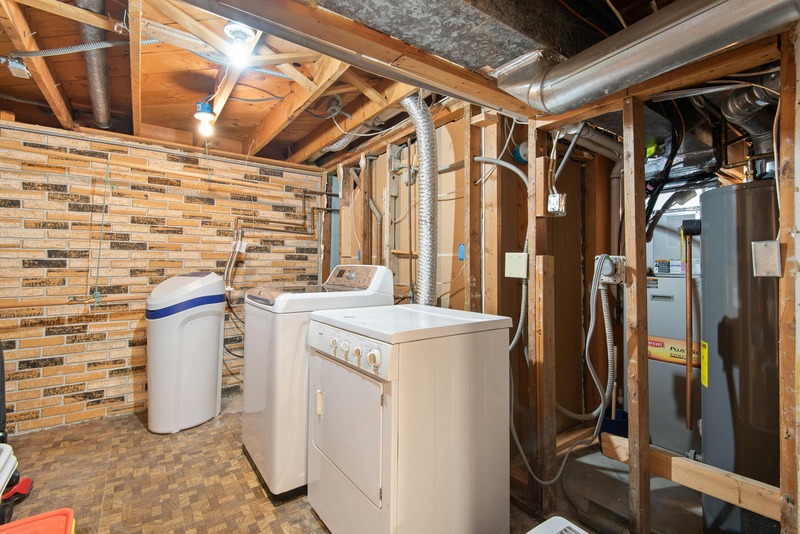
How Efficient is Nuclear Energy?
Learn how nuclear energy stacks up to other renewable and non-renewable types of energy generation.
How Efficient is Nuclear Energy?
00:00 / 00:00
Let's begin with the obvious, there is a lot of stigma around nuclear energy. There are concerns about safety, questions about waste, and a handful of misunderstandings.
So why do some people believe it is a vital part of our energy future?
The short answer is that it has massive energy density and is carbon-free.
We'll start with what is nuclear energy. Then, dive into comparisons. We'll point out the key points of sustainability. And we'll finalize with the ongoing research and innovations.
What is Nuclear Energy?
Nuclear Energy is energy, in the form of heat, extracted from splitting an atom in two with a neutron. This process is called fission. Nuclear fission uses atoms from uranium or plutonium.
Once one atom is hit, other neutrons are scattered. This causes a controlled chain reaction of splitting other atoms. This reaction takes place in a Nuclear Reactor.
The heat generated from a nuclear reactor can be turned into different types of power or used for processes. Some examples include building heat, electricity, shaft horsepower, water desalination, and other industrial processes.
There are two types of nuclear energy: fission and fusion. All of the power plants on Earth today use Fission.
Fusion is a process that releases heat by combining two small atoms. Fusion typically uses hydrogen or helium. Fusion already naturally occurs in the Sun using hydrogen. It then releases helium as a byproduct.
Because this process already exists, we know it is possible. However, we have yet to commercialize a Fusion reactor successfully. There are several large research teams and projects evolving today around the world.
We will dive a little deeper into Fusion at the end of the article. For now, let us focus on fission.
Is Nuclear Renewable/Sustainable/Clean?
Renewable, sustainable, and clean all have different meanings for an energy source. Let's break down what each one means first. Then determine where nuclear energy fits.
Is Nuclear Energy Clean?
Targeting climate change includes reducing the amount of carbon dioxide in the atmosphere. Power plants burning fossil fuels are called "dirty" because their emissions release greenhouse gases, including carbon dioxide, into the atmosphere. Nuclear Reactors do not emit carbon dioxide; they are carbon-free. By this definition, nuclear energy is clean.
Nuclear power generation does result in waste. However, the amount of waste generation is the lowest out of all other energy sources.
The United States creates about 2,000 metric tons of nuclear waste a year. For comparison, coal produces about 120 million tons of waste a year! Even the manufacturing of solar and wind technologies creates more waste than nuclear.
Is Nuclear Fuel Renewable?
The definition of renewable is not depleted when used. Based on this, the short answer is no, nuclear fuel is not renewable. Renewable examples would be water, wind, and solar energy. These sources will not be depleted when used for energy generation.
The main fuel for nuclear reactors is uranium. Uranium is a metal that needs to be mined, refined, and enriched before being loaded into a reactor. Since uranium is a metal, it is not considered a fossil fuel. Fossil fuels are created from organic matter over a thousand years.
Now you may be questioning, "Well, how much uranium do we have?". Great question! According to Scientific America, at today's consumption rate, we have about a 230-year supply of uranium.
Is Nuclear Energy Sustainable?
Sustainability is the ability to maintain a certain rate or level. It can also be defined as the avoidance of the depletion of natural resources in order to maintain an ecological balance.
While we seem to have plenty of uranium to provide energy to the world for a few hundred years, it is ultimately a finite source. Creating solar panels or wind turbines also includes using certain depletable materials such as silicon, aluminum, steel, iron, and copper.
How Efficient is Nuclear Energy Compared to Other Sources?
Nuclear energy is extremely efficient!
As a matter of fact, even energy.gov says "...and it's not even close!" Nuclear has a 92.5% energy factor.
- Geothermal Energy 74.3%
- Natural Gas 56.6%
- Hydropower 41.5%
- Coal 40.2%
- Wind 35.4%
- Solar 24.9%
The energy density of uranium is what makes it so much more efficient than any other fuel source. It literally contains millions of times more energy per mass than any other fuel source! Meaning less fuel, less waste, and more electricity generated.

It is difficult to compare nuclear plants against other sources because it is vastly different. Power plant construction and economic challenges need to be considered.
Solar, as a renewable energy solution, has been growing in popularity because of its ease of use, economical manufacturing improvements, and commercial growth.
Almost everything about nuclear energy is more expensive. Not only does it take decades to build a nuclear power plant, but it takes billions of dollars as well. At the same time, the climate crisis is waiting for no one.
Fission, Fusion, and the Future
The future of fission and fusion is fascinating!
Nuclear technology researchers are having breakthroughs in fusion as we speak! This is huge because the promise of fusion is more energy, less waste in quantity, and radioactivity, all while using a more abundant and accessible resource, hydrogen. Hydrogen is the most abundant element in the universe!
Though the complexity of building a commercial fusion power plant brings challenges. There have been success stories of creating a fusion nuclear reaction but not at a feasible scale for commercial purposes.
Here is some additional reading material on the future of nuclear energy.
Fusion Innovation
- Fusion breakthrough in the UK
- Bill Gate's advanced nuclear reactor promises less waste from fission
- The United States is Continuing to Invest in Nuclear Power
- The United States produces more nuclear power than any other country
Written by Hannah Bastawrose (Seeger)
Hannah graduated from Penn State with a Bachelors Degree in Mechanical Engineering and a Minor in Meteorology.
Connect
Recent Posts
What is considered a utility bill? Your Guide to Essential Services
Utilities help to keep your daily life comfortable and your home operable. So, what is considered a utility bill? And, what is the average cost of your monthly utility bill? In this guide we’ll break down what types of essential services make up your utility bills, how to read your bill, and strategies for reducing different utility bills.
March 2025

4 minutes

Creating Your Home Buying Budget: How much house can you afford?
Before you begin the home buying process, it’s important to take the time to understand how to budget to buy a home. In the time leading up to closing you’ll need to make smart financial decisions and save strategically for your home buying budget.
March 2025

6 minutes

Why You Need to Create a Budget: Everything You Need To Establish a Home Budget
Struggling to manage your finances? Learn how creating a household budget can help you take control of your money, reduce stress, pay off debt, and save for the future.
March 2025

6 min




